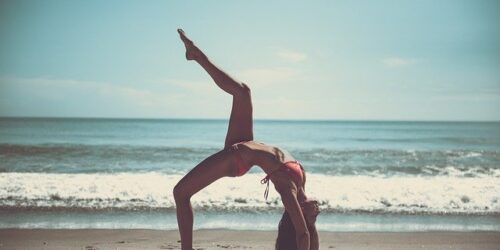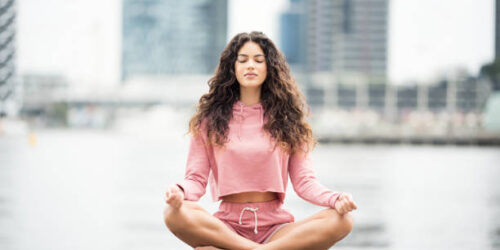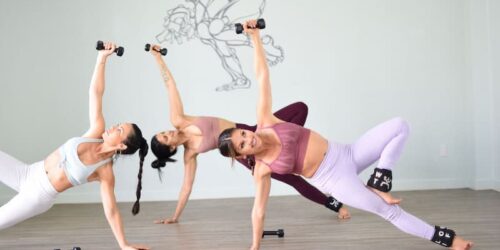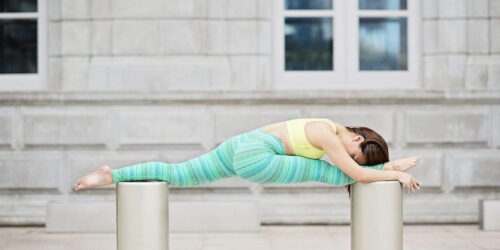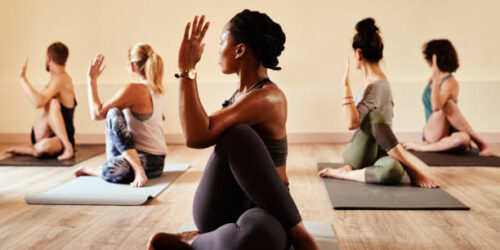How To Do Yoga Posture Wild Thing: Step-by-step Guide
Wild Thing creates a powerful connection to your mind, body, and breath in a joyful way. With this backbend, you can feel more liberated energetically by opening your chest, throat, and third eye. You might experience a wild feeling, as if anything you can imagine is within your grasp when you inhale and raise your top arm over your ear. To balance on one hand and the pinky edge of your foot, you must physically draw strength from your body. In order to move from One-Legged Downward Dog to behind you and onto the floor, you must have flexibility in your leg.
The pose is satisfying because it engages so many different parts of the body, including the hands, wrists, arms, back, hips, quads, and feet. Both a grounding and a flying sensation can be experienced in this posture. Take note of how this pose changes depending on the day. But each time, regardless of how you’re feeling, the pose exudes positivity and inspires a lot of faith in the amazing things that people are capable of.
Table of Contents
Wild Thing Basics
Sanskrit Name
Camatkarasana (KUH-mutt-Kuh-RUSS-uh-nuh)
Pose Type
Arm balance
Targets
Upper Body, Back
Why We Love It
It makes sense why this pose is recommended to relieve fatigue or mild depression. The whole of Wild Thing seems to be intended to make you happy. We practice being fearless and flexible along the way, but it’s complicated and requires some coordination to get into. And once you’re inside, it’s all play.
Wild Thing Pose Benefits
Wild thing stretches the front of the legs and the hip flexors as well as the chest, lung, and shoulder regions. Shoulders and the upper back gain strength from it. If you have carpal tunnel syndrome or rotator cuff injuries, stay away from this pose.
Step-By-Step Process for a Safe Wild Thing
Warm Up
After focusing your body and mind on your breathing, start warming up your chest, shoulders, upper back, and spine in both seated and tabletop positions.
Get Your Shoulders Stable
The Perfect Chaturanga muscles (lower trapezius, serratus anterior, infraspinatus, and latissimus dorsi) should be awakened and engaged in seated, tabletop, and Downward Facing Dog positions to stabilize the shoulder joint for later Side Plank variations.
Strengthen the Back, Release the Front
With a low center of gravity postures like Sphinx, Cobra, Locust, Half Bow (Danurasana), and Bow, you can strengthen the back body’s muscles (erector spine, back extensors, posterior deltoids, and triceps) and stretch out the front body’s muscles (rectus abdominals, pectorals, anterior deltoids, and biceps).
All over Strength and Heat
Through repeated Sun Salutations, the spine, the entire front and back body, the shoulder and hip girdles (psoas, gluteus maximus, gluteus medius, deep external rotators, hamstrings, and quadriceps), and the spine will continue to stretch and strengthen.
Practice the Actions in Side Plank
The shoulder girdle and side body will be further prepared for Wild Thing by performing side planks, starting with the easiest variations and working up to the most difficult ones. Before switching to Side Plank, make sure to place your heels back in Plank and integrate your humerus into the socket. (For side plank, read these suggestions.) When performing variations of the Side Plank, keep the lower shoulder blade (serratus anterior) scooped under the ribcage for support, and let the top shoulder blade, arm, and chest area do any variations of the chest opening. The lower shoulder joint, which is incredibly stable at its base, essentially has no movement.
Get into Your Arc
To continue to release tightness and tension from your obliques, psoas, and quadriceps, incorporate variations of Downward Facing Dog with the Scorpion Tail (a bent raised leg and open hip). Next, move to stand poses that open the hips, including Warrior 2, Side Angle Pose, Half Moon Pose, Bound Half Moon (Sugarcane), and Dancers Pose.
Start Low–Side Plank to Wild Thing
Before tilting slowly from your Scorpion One-Legged Downward Facing Dog to Wild Thing, make sure to practice at least one Wild Thing from Side Plank (on both sides). Before stepping into Wild Thing, we advise a 5-count transition. Keep in mind that the bottom shoulder joint serves as the base. Most opening, expanding, and expression occur on the top shoulder!
Feel the Joy!
Once you have safely entered Wild Thing, take a moment to breathe, feel the freedom, and perhaps even the “Radical Joy” that the original practitioners of this lovely pose intended!
Transition Back With the Same Care
To safely tilt your arc back from Wild Thing to your Scorpion Tail Downward Facing Dog, exhale completely, hug your muscles to your bones, draw your navel towards your spine, and push through the bottom hand as you tilt your arc from the floor back into the air.
Beginner’s Tip
If you’re hesitant to enter Wild Thing, try Downward-Facing Dog with your right leg lifted, hip opened, and knee bent. With each breath in, slightly widen your right heel toward the floor before stopping when it becomes uncomfortable. Rotate the bottom hand outward as the foot approaches the ground over time. With no hurry, move slowly and try to plant your right foot on the ground.
Common Mistakes
Doing this pose if you’re inexperienced or uncomfortable in the pose is the biggest mistake to avoid. If you are not sufficiently advanced and flexible, you run the risk of hurting yourself because it is a deep backbend.
What’s the Difference Between Wild Thing and Flip Dog?
Dr. Theo Wildcroft’s research suggests that the origin of the Wild Thing was a variation of the Side Plank, specifically as a way to gracefully exit an attempt at Full Vasisthasana. In a side plank, the tendency is for the body to tip backward as you move your top leg toward a perpendicular position. A new posture was created by landing the upper leg behind you rather than on the ground.
The bottom arm and leg from Side Plank remain in their original positions when performing Wild Thing. The top leg is bent with the foot’s ball on the floor, while the bottom leg remains straight.
In his book 40 Days to Personal Revolution (2003), Baron Baptiste writes that his version of a Flipped Downward Facing Dog “arose very spontaneously and naturally as I developed my own style…,” perhaps in the process of playing with a very opened As Baptiste enters the pose in the down dog split, that is where we will start. In comparison to Wild Thing, Flip Dog is organized much more symmetrically. Since both knees are kept bent and the feet are flat on the floor and parallel to one another, the alignment is similar to Wheel Pose in the lower body.
Summary
Always pay attention to your shoulders and wrists when performing the Wild Thing posture, whether it’s for aesthetic or strength reasons. As we perform this pose, these two frequently bear a heavy load. Once there, breathe deeply and savor the feeling of your chest being open and the strength of your body!
